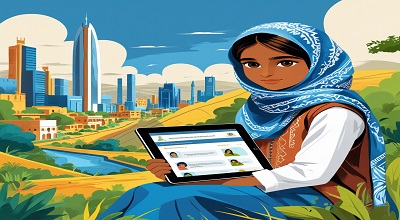Remote Learning for Rural, Urban & Remote Areas
Remote Learning for Rural, Urban & Remote Areas: Remote learning has evolved significantly across the globe, especially in countries with diverse geographical and infrastructural challenges. Pakistan, with its expansive rural areas, vibrant urban centers, and remote regions. Presents a unique landscape for the development and implementation of remote education.
As of 2025, remote learning has become more crucial than ever. Both as a response to challenges like the COVID-19 pandemic. As a long-term strategy to address educational inequities. This article explores the current state of remote learning in Pakistan. Focusing on its impact on rural, urban, and remote regions. Additionally, we will dive into the opportunities, challenges, and innovative solutions driving this transformative change in education.
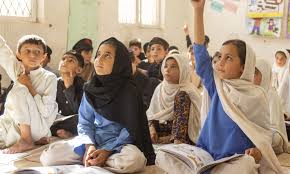
The State of Education in Pakistan: A Snapshot (2025)
Overview of Education in Pakistan
Pakistan is home to more than 230 million people, with a significant proportion of the population residing in rural and remote areas. Educational attainment varies widely across different regions. Influenced by factors such as urbanization, access to infrastructure, socio-economic conditions, and government policies. As of 2025, the education system in Pakistan has made strides, but it still faces immense challenges.
- Urban Education: Major cities like Karachi, Lahore, and Islamabad have relatively better educational infrastructure, with schools and universities increasingly incorporating digital tools.
- Rural Education: Rural areas, however, lag behind, with many lacking basic educational facilities, qualified teachers, and internet access.
- Remote Regions: Regions like Balochistan, parts of Khyber Pakhtunkhwa (KP), and northern Gilgit-Baltistan face unique challenges. Including difficult terrain, political instability, and limited connectivity, further hindering educational progress.
Remote learning, powered by digital tools and internet connectivity, has emerged. As a potential solution to bridge the educational divide in these areas.
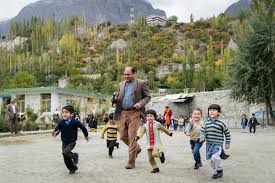
Rise of Remote Learning in Pakistan
Technological Advancements and Accessibility
By 2025, technological infrastructure in Pakistan has advanced, especially in urban centres. Where high-speed internet, digital classrooms, and interactive platforms have become more common. However, rural and remote areas continue to face significant barriers. Such as limited internet penetration, unreliable electricity, and inadequate access to digital devices.
- Government Initiatives: The Pakistani government, in collaboration with NGOs and international organizations, has taken steps to address these challenges. The launch of various digital education programs, including TeleSchool and E-Rozgar, has contributed to improving remote learning access.
- Private Sector Contributions: The private sector, including ed-tech startups like Edtech.pk and Milele Academy, has played a pivotal role in providing affordable and accessible learning solutions to students in underserved areas.
Despite these efforts, the digital divide remains a pressing issue that needs to be addressed comprehensively.
1: The Rural Landscape: Challenges and Solutions
Challenges Faced by Rural Students in Pakistan
Education in rural Pakistan is often hindered by several challenges:
- Limited Internet Access: Many rural areas still lack stable internet connectivity, which makes online learning difficult. The cost of internet data is also prohibitive for low-income families.
- Lack of Infrastructure: Schools in rural areas often lack the infrastructure needed to support digital education. Including computers, internet connectivity, and digital literacy training for both students and teachers.
- Teacher Shortages and Lack of Training: Many rural schools suffer from a shortage of trained teachers who can deliver quality remote education. Teachers in these areas often lack the skills and resources to adapt to digital teaching methods.
Innovative Solutions for Rural Education
To overcome these challenges, several solutions are being explored:
- Mobile-Based Learning: In rural areas where internet access is limited, mobile-based learning platforms like SABAQ and Ustaad are offering educational content via SMS and low-data apps.
- Offline Digital Content: Organizations like Dost Education are creating downloadable, offline resources for students in remote areas.
- Community Radio and Television Programs: The government has partnered with community radio stations and local TV channels to broadcast educational content. Particularly in local languages, to reach underserved communities.
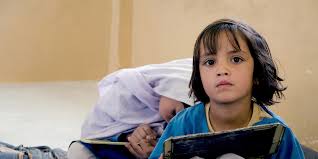
2: Urban Areas: Embracing Remote Learning
Urban Centers and Remote Learning
Urban areas in Pakistan, particularly larger cities, have more access to technology and better infrastructure. Schools and universities in cities like Karachi, Lahore, and Islamabad have increasingly adopted remote learning models, even before the pandemic.
- Blended Learning Models: Many urban schools are adopting blended learning approaches, which combine online learning with in-person teaching. This model is particularly effective in enhancing the learning experience by allowing students to engage with materials at their own pace while still receiving face-to-face instruction.
- E-Learning Platforms: Platforms like Khan Academy, Coursera, and Udemy have gained popularity in urban centers. Offering a wide range of courses in various disciplines.
- Digital Classrooms and Smart Schools: In major cities, digital classrooms equipped with interactive whiteboards. Projectors, and high-speed internet have transformed the learning experience.
While urban areas have benefited greatly from remote learning, there are still concerns related to the digital divide. As lower-income families in these regions may not always afford the necessary technology.
3: Remote Learning in the Most Remote Areas of Pakistan
Barriers in Remote Areas
Remote areas of Pakistan, such as the mountainous regions of Gilgit-Baltistan. The deserts of Thar, and the tribal regions in Balochistan, face unique educational challenges.
- Geographical Isolation: The physical remoteness of these areas makes it difficult to set up educational infrastructure. Many students in these regions have to travel long distances to attend school, and even then, the quality of education is often subpar.
- Lack of Digital Infrastructure: Even if digital infrastructure is available, the hilly terrain and remote locations make it difficult to maintain reliable internet and power connections.
- Cultural Barriers: Some remote areas have deeply entrenched cultural norms that may limit girls’ access to education, further exacerbating the educational divide.
Solutions for Remote Areas
Innovative solutions are being deployed to reach students in these areas:
- Satellite Internet Services: Companies like PakSat are working to provide satellite internet solutions to remote regions of Pakistan.
- Solar-Powered Schools: Solar-powered digital learning hubs are being set up in remote villages, allowing students to access online education even in areas without a stable electricity supply.
- Tele-Education Platforms: Platforms such as Telenor’s Teach From Home program are helping connect remote learners to educators via mobile devices, offering both live and recorded sessions.
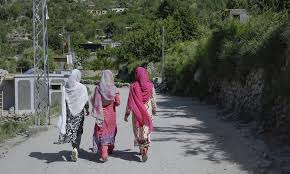
Policy and Government Support for Remote Learning
Government Initiatives in 2025
The Pakistani government has made significant strides in promoting remote learning across the country. Some of the key policies and initiatives include:
- Digital Pakistan Vision: Launched to transform Pakistan into a digitally empowered society, the Digital Pakistan initiative aims to improve internet accessibility and e-governance, which includes educational technology.
- TeleSchool and E-Learning Platforms: The government’s TeleSchool initiative, which was launched during the COVID-19 pandemic, continues to serve as a major educational platform in rural areas, broadcasting educational content through satellite TV.
- Internet Connectivity Projects: The government has invested in expanding 3G and 4G networks to rural and remote areas, to make the internet more accessible to students in underserved regions.
The Future of Remote Learning in Pakistan
Emerging Trends and Innovations
As we look toward the future, several trends are likely to shape the future of remote learning in Pakistan:
- Artificial Intelligence (AI) and EdTech: AI-powered learning tools and adaptive learning platforms will become more prevalent, allowing for personalized learning experiences.
- Global Partnerships: Pakistan’s collaboration with international organizations, such as UNESCO and the World Bank, will continue to play a key role in advancing remote learning in the country.
- Local Content Development: There will be a greater emphasis on developing educational content in local languages and tailored to the cultural needs of Pakistani students.
FAQs (Remote Learning for Rural, Urban & Remote Areas)
Q1: What are the major challenges of remote learning in rural areas of Pakistan?
A1: The major challenges include limited internet access, lack of digital devices, poor infrastructure, and teacher shortages. Additionally, geographical isolation and socio-economic factors make it difficult for rural students to access quality remote education.
Q2: How has the government of Pakistan supported remote learning in rural regions?
A2: The government has supported remote learning through initiatives like TeleSchool, satellite internet projects, mobile-based learning solutions, and collaborations with international organizations to improve infrastructure.
Q3: Are urban schools in Pakistan fully equipped for remote learning?
A3: While urban schools generally have better access to technology and infrastructure, the digital divide still exists. Some lower-income families in urban areas struggle with accessing necessary devices and reliable internet.
Q4: How are remote learning solutions adapting to remote and mountainous regions of Pakistan?
A4: Solutions such as solar-powered schools, satellite internet services, and mobile learning platforms are being deployed to overcome the challenges posed by geographical isolation and lack of infrastructure.
Q5: What role does mobile learning play in remote areas?
A5: Mobile learning plays a critical role in remote areas by providing access to educational content through SMS, low-data apps, and mobile internet, especially where broadband access is unavailable.
Q6: How are private companies contributing to remote education in Pakistan?
A6: Private companies like Edtech.pk and Milele Academy are offering affordable learning platforms and digital content to bridge the education gap, particularly in underserved areas.
Q7: What is the future of remote learning in Pakistan?
A7: The future of remote learning in Pakistan will see increased use of AI, personalized learning tools, better internet connectivity, and more local content development to cater to diverse regional needs.
Conclusion
Remote Learning for Rural, Urban & Remote Areas: As of 2025, remote learning in Pakistan is increasingly becoming a viable solution to the country’s educational challenges. However, significant hurdles remain, particularly in rural and remote areas. The government’s efforts, coupled with innovations from the private sector, are helping to close the education gap.
But there is still much work to be done. Continued investment in digital infrastructure, teacher training, and affordable access to technology will be key to ensuring that remote learning can reach every corner of the country and provide quality education for all students in Pakistan.
